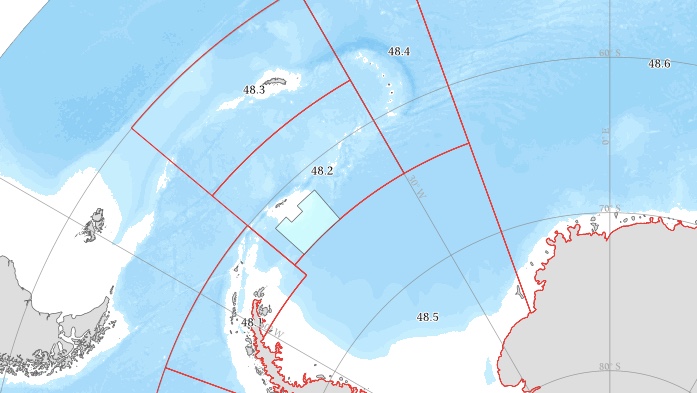Established
The South Orkney Islands Southern Shelf Marine Protected Area (SOISS MPA) was established by CCAMLR in 2009 under CM 91-03, with the objective of contributing towards the conservation of biodiversity in Subarea 48.2, and to the development of a representative system of protected areas across the Convention Area. At the time of adoption, the Commission agreed to review CM 91-03, based on advice from the Scientific Committee, at its regular meeting in 2014 and at subsequent five-year periods (CM 91-03, paragraph 9).
- (i) Provision of a scientific reference area
- (ii) Conservation of important predator foraging areas
- (iii) Conserve representative examples of pelagic bioregions
- (iv) Conserve representative examples of benthic bioregions
Antarctic-wide geomorphology
O’Brien P.E., A.L. Post, R. Romeyn (2009) Antarctic-wide Geomorphology as an aid to habitat mapping and locating Vulnerable Marine Ecosystems. Paper submitted to the CCAMLR Workshop on Vulnerable Marine Ecosystems. La Jolla, CA, USA 3–7th August 2009. WS-VME-09/10.
Pelagic bioregionalisation of the Southern Ocean, and associated data layers; Sea-ice concentration; Chlorophyll-a concentration
Raymond, B. (2007) Various resources related to the Experts Workshop on Bioregionalisation of the Southern Ocean, held in Hobart, Sep 2006 Australian Antarctic Data Centre - CAASM Metadata
Foraging distributions of Adélie and chinstrap penguins
Lynnes, A.S., K. Reid, J.P. Croxall, P.N. Trathan (2002) Conflict or co-existence? Foraging distribution and competition for prey between Adélie and chinstrap penguins. Marine Biology 141: 1165-1174.
Distribution of albatrosses and petrels
BirdLife International (2006) Analysis of albatross and petrel distribution within the CCAMLR Convention Area: results from the Global Procellariiform Tracking Database. CCAMLR Science 13: 143-174.
Locations of oceanographic fronts
Heywood, K.J., A.C. Naveira Garabato, D.P. Stevens, R.D. Muench (2004) On the fate of the Antarctic Slope Front and the origin of the Weddell Front. Journal of Geophysical Research 109: C06021. doi:10.1029/2003JC002053.
1. Bioregionalisation and mapping pelagic biodiversity
2. Physical and biological changes to important pelagic habitats, including those related to ocean circulation, sea ice, variations and trends in primary production
3. Inter-annual variation in spatial distribution of pelagic ecosystems and biodiversity, including changes in zooplankton biodiversity and species composition
4. Trends in Antarctic krill abundance in relation to physical drivers, climate change and possible fishery effects
5. Bioregionalisation and mapping benthic biodiversity, including VMEs
6. Relationship between benthic biodiversity and physical habitat, including geomorphic zones
7. Effects of fishing, environmental variability and climate change on marine living resources, in comparison with other, fished areas
8. Effects of changes in the availability of prey species (Antarctic krill) on predators in relation to fishing, physical forcing & climate change, including effects on colony locations, abundance, condition, life history, foraging ecology & demography
9. Location and importance of key penguin foraging areas, for different species and during different life history stages
10. Factors influencing where different species of penguins forage inside and outside the MPA during different times of year
11. Variation in penguin habitat use between years

